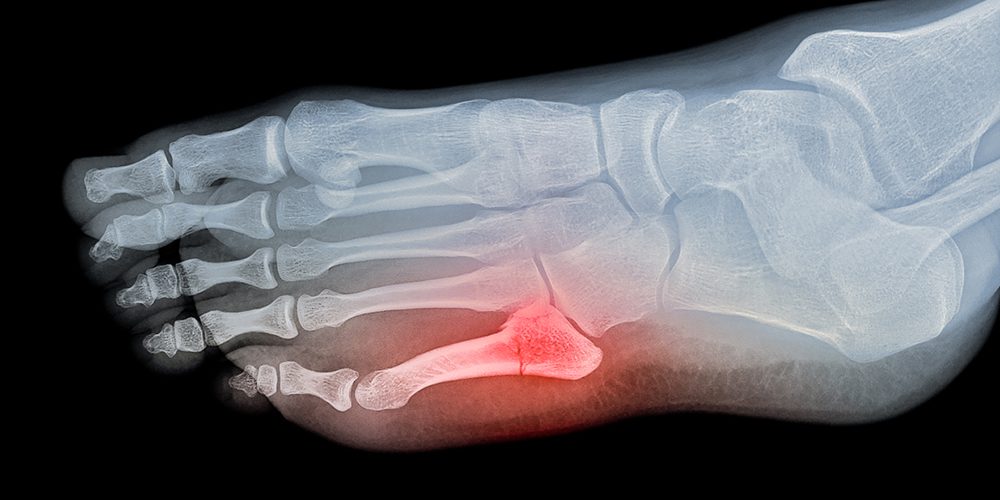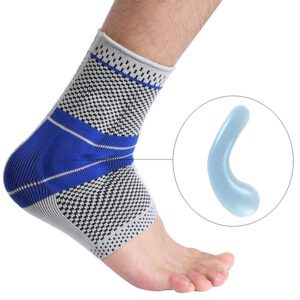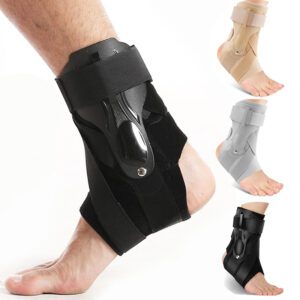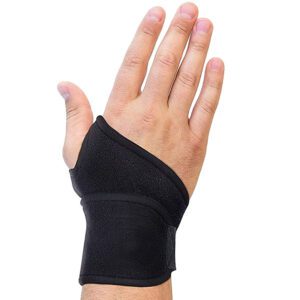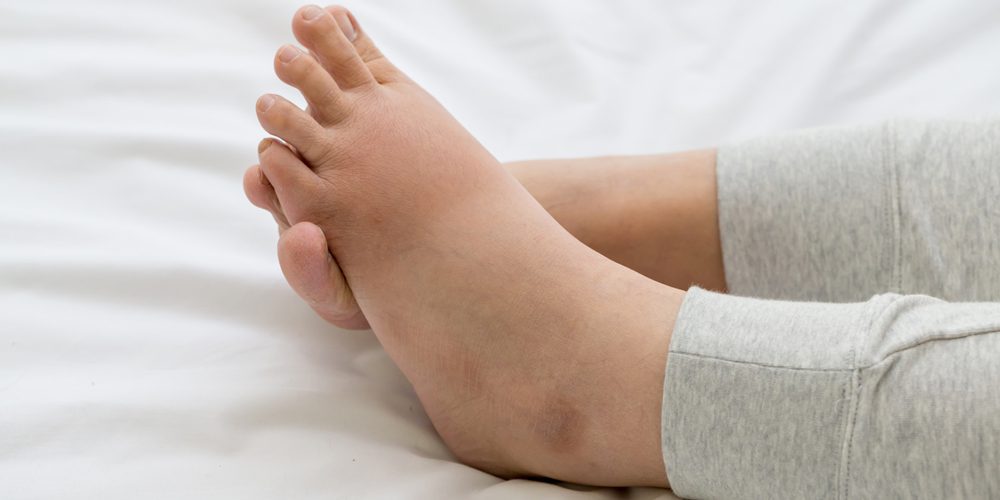A broken toe, also known as a toe fracture, is a very common injury. Studies show that it occurs most often in people who are active or participate in sports. The pinky toe is the most commonly fractured digit with the break occurring at the base of the toe.
The toes make up part of your foot called the forefoot and consist of four toes made up of three bones called phalanges and two joints each; except for your big toe which only has two bones and one joint. If you think you have a broken toe, see your doctor immediately because this could be an indication that there’s something more serious going on like osteomyelitis (bone infection).
It’s important to know how to identify a broken toe so you can report it to your doctor. Here are some ways that the digits of your feet differ from one another:
The pinky toe is the smallest digit on both feet.
The big toe is the largest digit on both feet, but it’s longer than the second toe.
The ball of each foot is where your toes meet the rest of your foot.
The top of each foot has a protrusion called the instep.
This article is part of our “Foot Pain” series. Please feel free to check out our blog page for more information.
Types of toe fractures
Toe fractures can be categorised into 6 different categories:
Avulsion fracture – This type of fractured toe occurs when a piece of bone pulls away from where it’s attached onto another surface.
Closed fracture – This fracture occurs when the ends of the broken bone don’t pierce through the skin, but there’s still damage to the overlying tissue.
Open fracture – This type of fracture occurs when the broken bone pierces through the skin and may involve damage to surrounding tissues and blood vessels.
Displaced fracture – This fracture occurs when the broken bone is separated fully or partially from the rest of the bone
Non-displaced fracture – A non-displaced fracture is a type of fractured toe that occurs when the bones stay in place without moving, but still break.
Stress fracture – A stress fracture is a fracture being caused by overuse or repetitive activities/movements
Symptoms
A broken toe can be painful, but must not necessarily. If you do feel pain in your broken toe, it’s important to score the pain on a scale of 0-10 with 10 being the worst.
How can you tell if you broke your toe?
The symptoms will also depend on how serious your fractured toe is and what kind of fracture occurred. Symptoms include:
- Bruising
- Swelling around the area that has been affected by the fracture
- Severe pain when trying to move the affected toe, especially if you’ve broken your big toe
- Deformity of the toe or toenail – your toe may look crooked or out of place
- Difficulty with walking
Should I go to the doctor for a broken toe?
A broken toe doesn’t always need medical treatment, but if you suspect that it is broken then the best thing to do is seek medical attention even if it isn’t painful. This gives your doctor the opportunity to properly diagnose you and provide the right treatment plan.
Can you walk on a broken toe?
Typically, you should not walk on a broken toe. It can cause damage to the fractured bone and surrounding tissues which is why it’s best to keep off of the foot until your fracture is healed. However, if your pinky toe is affected and if the pain is not too bad, you should be able to walk short distances.
Causes
A broken toe can have many different causes, but here are the most common ones:
- Dropping something heavy on your foot
- Stubbing your toe against something hard, like a piece of furniture
- Sports injuries
- Overuse and repetitive movements
- Wearing the wrong footwear
- Medical conditions such as Osteoporosis
Can you break your toe by stubbing it?
Stubbing your toe against something hard like a wall or piece of furniture is actually one of the most common ways that a person can break their toe. This is because this forceful impact to your foot causes the small bone at the base of your toes, called a sesamoid bone, to fracture.
Diagnosis
When you contact your doctor about a toe fracture, he or she will typically ask you several questions about when you first noticed the injury and your medical conditions.
Your doctor will check your toes for tender regions during the physical exam. Your doctor will also inspect the skin around your injury to ensure it is intact and that adequate blood flow and nerve signals are still being delivered to the toe.
How do I know if my pinky toe is broken or just bruised?
In most cases an X-Ray is taken to diagnose a fractured toe. This will show the doctor the exact location and type of fracture that occurred. The X-Ray can also help determine whether there’s a risk for infection, which could be a complication if not treated immediately.
Treatment
If it’s not your big toe doctors will usually recommend treating your condition at home.
How do u treat a broken toe?
Here are the most effective options that doctors recommend:
Rest: This means staying off of the injured toe and avoiding any weight-bearing activity on it for a few weeks. Your doctor may also recommend keeping your foot elevated while sleeping to reduce swelling and pain.
Wearing a supportive donning boot: This device is placed over the foot and leg after surgery or if you need to immobilize your broken toe. This boot will keep your foot from moving around too much and help minimize movement of the affected toe.
Medications: Pain medication may be prescribed to reduce pain and inflammation caused by a broken toe. Your doctor could also recommend an oral antibiotic if he or she feels that there’s a risk for infection.
Ice: This should be applied to the injured area for 15 minutes a few times a day. Placing ice on your toe will help reduce pain and swelling.
Physical Therapy: This may be recommended for those who have had their big toe fracture or those who have sustained a severe injury that affects movement of other toes. A physical therapist can teach you exercises to improve movement and strength in your foot.
Surgery: If the fracture is severe or your toe isn’t healing as expected, then surgery may be required. The surgery will involve realigning the bones and placing a pin or wire to keep the broken bone in place while it heals. Following surgery, you may be required to wear a cast, boot, or external fixation device for several weeks.
Taping: Taping your toe for support is another option to keep the toe from moving around.
Wearing a splint or cast: This is a good option for those with more severe fractures that require the toe to be immobilized. In some cases, your doctor may recommend wearing a cast on your foot and using crutches while your fracture heals.
Can a broken toe heal on its own?
Yes, most toe fractures heal on its own with the proper treatment within 4-6 weeks. The affected toe will remain sore and swollen for a while after a fracture, but you should be able to resume normal activities as the pain subsides.
What happens if you leave a broken toe untreated?
If you fail to get treatment for a broken toe, it could lead to more serious complications such as an infection. This is the case if any fracture and dislocation isn’t treated within two weeks after it occurs.
A concern with any injury causing bone displacement is that it may require surgery to realign the bones. If your toe is severely broken, it could lead to poor healing.
Do’s and Don’t’s with a broken toe
Do:
- take proper medication such as ibuprofen and paracetamol for the pain and swelling
- give your foot some rest and keep it raised
- hold an ice pack (or bag of frozen peas) wrapped in a towel on your toe for up to 20 minutes every few hours
- choose to wear wide, comfortable shoes with a low heel
- avoid walking around as much as possible and don’t put weight on your toe
- strap up your broken toe – put a small piece of cotton wool or gauze between your sore toe and the toe next to it, then tape them together to support the sore toe
Don’t:
- do not strap up your toe if it’s pointing out at an odd angle or you have hurt your big toe – get medical advice
- do not put ice directly on your skin
- do not walk or stand for long periods
- do not wear tight, pointy shoes
- do not play any sports like football, rugby or hockey for 6 weeks or until the pain eases
- do not try and treat your child’s toe – take them to an urgent treatment center or ER
Conclusion
Broken Toes are a common injury, and they can be painful. The good news is that there are many treatments to help relieve the pain and decrease swelling in your foot. If you’re looking for some relief from your toe pain, resting your foot and applying ice packs may give you some relief. But when in doubt, you should always consult a doctor at the earliest to rule out more severe injuries or consequences. What other treatment methods have helped you when dealing with a broken toe? Let us know by commenting below!





